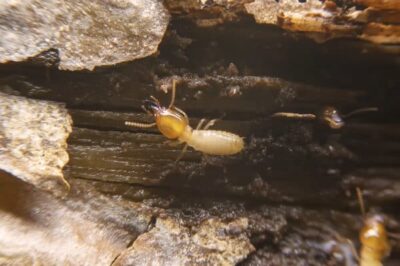
How Do Anti-Termite Additives Formulate Chemical Barriers Against Infestations?
Termites pose an unexpected threat to various materials, including plastic, PVC, wires, and cables. Despite their preference for cellulose-rich substances like wood, termites can infiltrate and damage non-cellulosic materials as well. They are attracted to the warmth emitted by electrical equipment and may burrow into plastic and PVC components in their search for moisture. The moisture content in these materials, combined with termites’ ability to chew through them, can result in structural weakening. Moreover, termites can compromise the insulation of wires and cables, leading to electrical failures and potential safety hazards. Vigilance and preventive measures are crucial to safeguard non-traditional termite targets, ensuring the integrity and functionality of plastic, PVC, wires, and cables in various applications.
What is Anti-termite additive
The incorporation of anti-termite additives has become pivotal in protecting plastic and wires & cables from termite infestations. Anti-termite additives are chemical compounds specifically designed to deter termites, offering a proactive defence against their destructive tendencies. In the realm of plastics, these additives are mixed with polymers during manufacturing, creating a termite-resistant barrier. This significantly reduces the risk of structural damage, preserving the integrity of plastic components over time.
Similarly, in wires and cables, the introduction of anti-termite additives serves as a preventive measure against termite-induced deterioration. These additives create a protective shield, deterring termites from compromising the insulation and structural integrity of wires and cables. By inhibiting termite activity, anti-termite additives contribute to the longevity and reliability of plastic and cable products in various applications. Embracing these advancements in materials science is essential to ensure the durability and functionality of plastic and wires & cables in termite-prone environments.
How it works
Lifeline Technologies offers cutting-edge ant and termite-repellent additives designed to safeguard polymers. These additives utilize a micro-porous acrylic polymer infused with a blend of odour-emitting compounds and intensely bitter substances. The unique composition dissuades both ants and termites from attacking polymers, providing a robust defence against potential damage.
Ease of application is a key feature, as the ant cum termite repellent additives can be easily dosed and uniformly dispersed within the host polymer. Compatible with materials like LLDPE, PP, and EVA, these additives find versatile applications in various settings, such as domestic and industrial cables, drip irrigation pipes, automobile cables, thermostats, silage bags, and plastic moulded components. This adaptability ensures comprehensive protection across a spectrum of products.
The repellent additives are specifically formulated to exhibit longevity, boasting a shelf life of two years. This feature enhances their reliability and efficacy in providing sustained protection against ant and termite infestations. Lifeline Technologies’ innovative solution thus offers a proactive and durable defence, contributing to the longevity and performance of polymer-based materials in diverse applications.
Key features and characteristics
In conclusion, anti-termite additives represent a breakthrough in polymer protection, employing unique formulations to deter termites from compromising polymers, wires, and cables. With a focus on non-toxicity, RoHS and REACH compliance, and even food safety, these additives ensure both environmental responsibility and user safety. Their versatility, compatibility with various materials, and proactive defence mechanism make them indispensable in safeguarding products across industries. Embracing these innovations signifies a commitment to resilient, long-lasting materials, addressing the challenges posed by termite infestations while meeting stringent safety and regulatory standards.